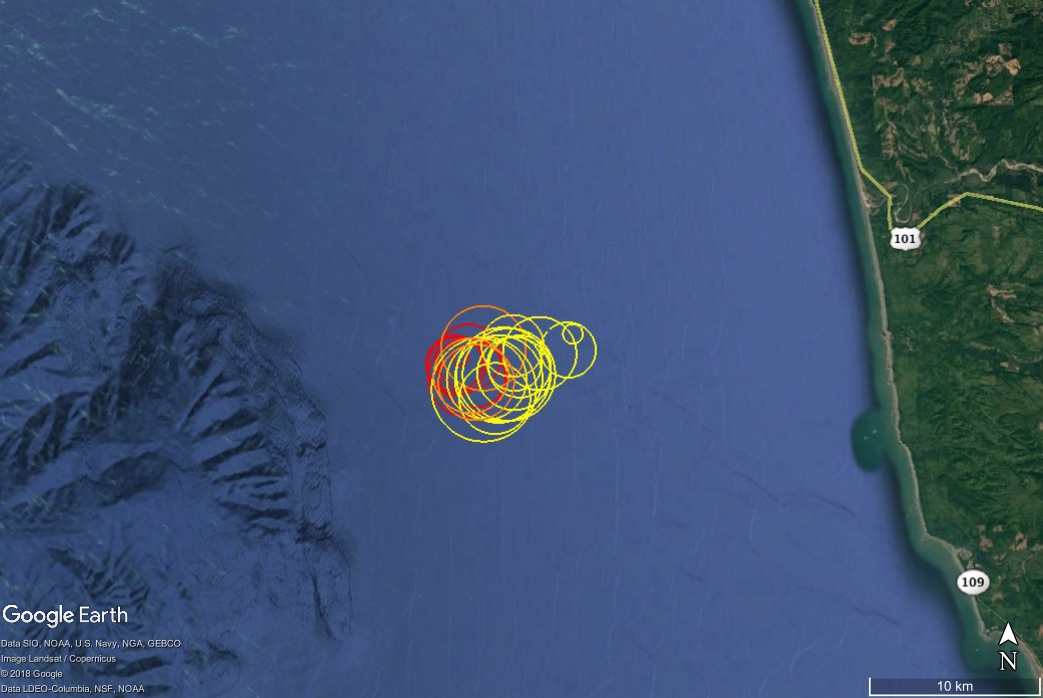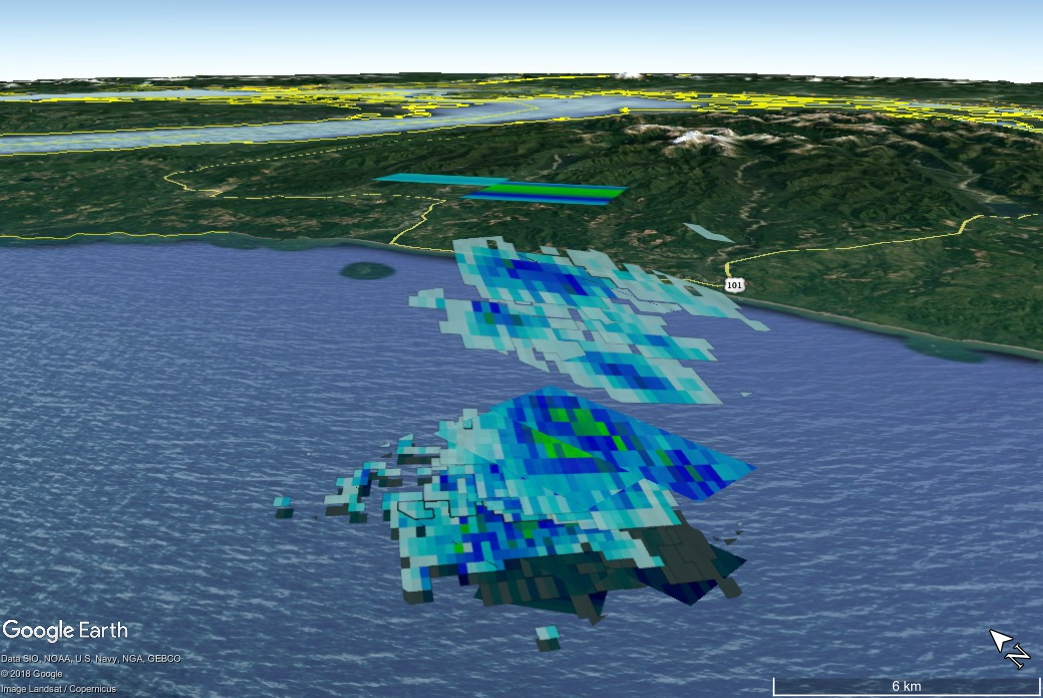DATE/TIME3/7/2018 @ 7:05 PM3/7/2018
|
LAT/LONG47.4312 • -124.3448
47.4312
|

This event was a probable meteorite fall that occurred at 7:05 PM local time on 07 March 2018, or 03:05:21 UTC on 08 March 2018 UTC. Events are recorded as “probable” if they produce well-defined signatures of a meteorite fall in weather radar imagery at the time and place described by eyewitnesses, but no meteorites have been recovered from the event to date. The fireball occurred during overcast skies covering the local area, restricting the number of American Meteor Society eyewitnesses to 22. Four eyewitnesses reported sonic booms to AMS, with additional reports in local media. Eyewitness reports center on the western end of the Olympic peninsula in western Washington state.
Meteorites have not been recovered from this event to date. However, the exploration vessel E/V Nautilus performed a search for meteorites using mapping sonar and two remotely operated vehicles (ROVs). The ROVs found that the seafloor at the site is very soft and any meteorites likely sank into it but recovered seven seafloor sediment samples for laboratory analysis.
This event is recorded as American Meteor Society event number 914 for 2018. Signatures of falling meteorites can be found in imagery from three nearby weather radars. In the NEXRAD weather radar network operated by NOAA, the KRTX (Portland, OR), KLGX (Langley Hill, WA), and KATX (Seattle, WA) radars record signatures of falling meteorites.
The first appearance of falling meteorites on radar occurs at 03:05:26 UTC and 19,750 m above sea level (ASL) in the 0301 UTC data set for the KRTX radar in the 3.9 degree elevation radar sweep. This signature appears only five seconds after the fireball terminus, as recorded by a video found on the AMS page for this event. This detection is unusual because of its very high altitude, and meteorites in this radar signature have not yet size-sorted through aerodynamically limited fall toward the ground. Signatures consistent with falling meteorites appear in a total of no fewer than twenty-six radar sweeps from the three radars, with a final signature appearing at 03:15:42 UTC. The radar sweeps made at 0.12 degrees elevation from the KLGX radar feature anomalously high total reflectivity – these sweeps are recording a mixture of falling meteorites and spray kicked up by meteorites striking the ocean.
Calculations of mass and total number of meteorites based on weather radar data indicate that this meteorite fall is approximately 31x the total mass of the Park Forest, IL meteorite fall in 2003. The fragmentation behavior of this probable fall is not typical, showing a preference for survival of larger meteorites compared to other meteorite falls seen on radar.
